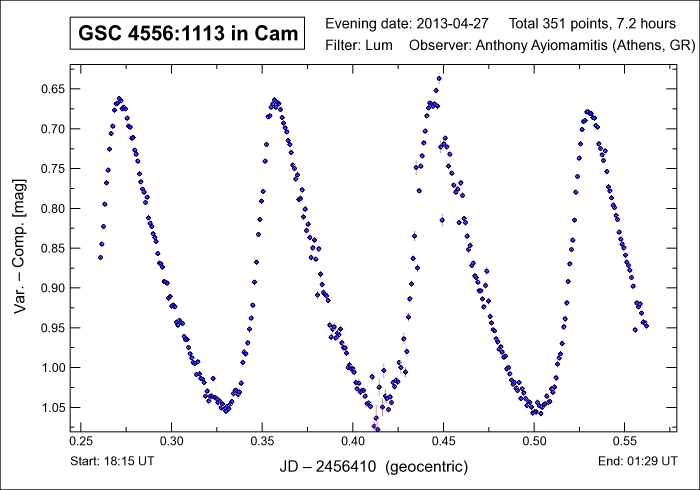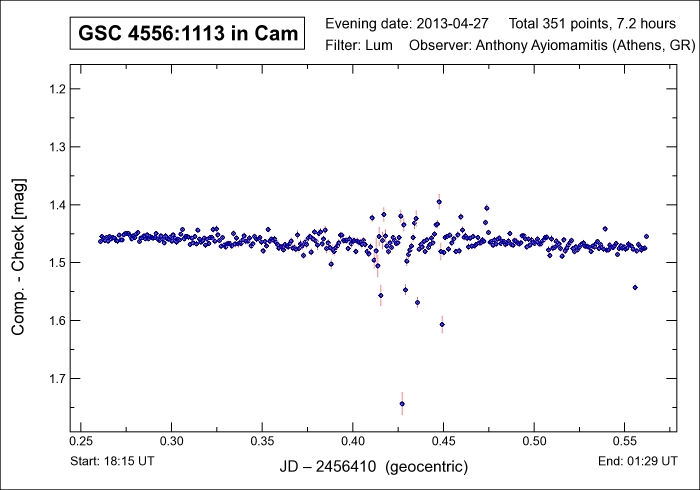
A variable star, as its name suggests, is a star whose magnitude varies intrinsically, in contrast to eclipsing binaries whose magnitude
varies as a result of one star in the binary system eclipsing the other. True variables are one of five types, namely Mira stars, semiregular
stars, cepheids, eruptive variables and, finally, cataclysmic variables. Minimum to maximum magnitude can range from days to many months with
some variables displaying irregular periods.
A popular method for the study of variable stars, particularly short-term variables, is by the use of the technique known as "differential
photometry". Rather than measure the (variable) magnitude of a variable star on an absolute scale, measurements are made over time relative to
one or more non-variable star(s) and these differences are then plotted so as to study and illustrate the relative or differential change in
magnitude. Due to the very large number of variables stars, the field of differential photometry represents one of the key fields in astronomy
whereby the amateur astronomer can make a meaningful and long-lasting contribution to both science and astronomy.
More recently, the search for extrasolar planets (over 750 discovered so far) has identified yet another interesting application for the
practice of differential photometry whereby the minute drops in magnitude of a star hosting an exoplanet are studied. Further details for the
interested party are available here.
Note: The large-amplitude short-period pulsating star GSC 04556-01113 is a fast pulsating variable star with a period
of 124.33 minutes and which involves a delta mag of 0.40 (R) magnitudes during this brief time interval. GSC 04556-01113 is a HADS variable
discovered by
Gregor Srdoc in 2008.
Further details from the International Variable Star Index are available
here whereas an AAVSO finder chart is available
here.
Note: The time series below was adversely affected by thin clouds during the complete session and especially around
the third maximum (both before and after) where transparency became prohibitive. A new effort under better conditions will ensue at the first
available opportunity.
|
Variable Star: GSC 4556-1113 Other Designation: N/A RA / Dec: 12h 03m 17s / +80° 33' 43" Magnitude: 11.5 - 11.9 (R) Period: 0.086343043 days Variability: HADS Comparison Star: GSC 4556:1009 Check Star: GSC 4556:0919 |
 
|
Date: Apr 27-28, 2013 21:15 - 04:30 UT+3 Location: Athens, Greece Equipment: AP 305/f3.8 Riccardi-Honders AP 1200GTO GEM SBIG ST-10XME SBIG CFW10 SBIG LRGB filters Integrations:
Temperatures:
Software: CCDSoft V5.00.201 AIP4Win V2.4.0 Processing: Reduction Differential Photometry |